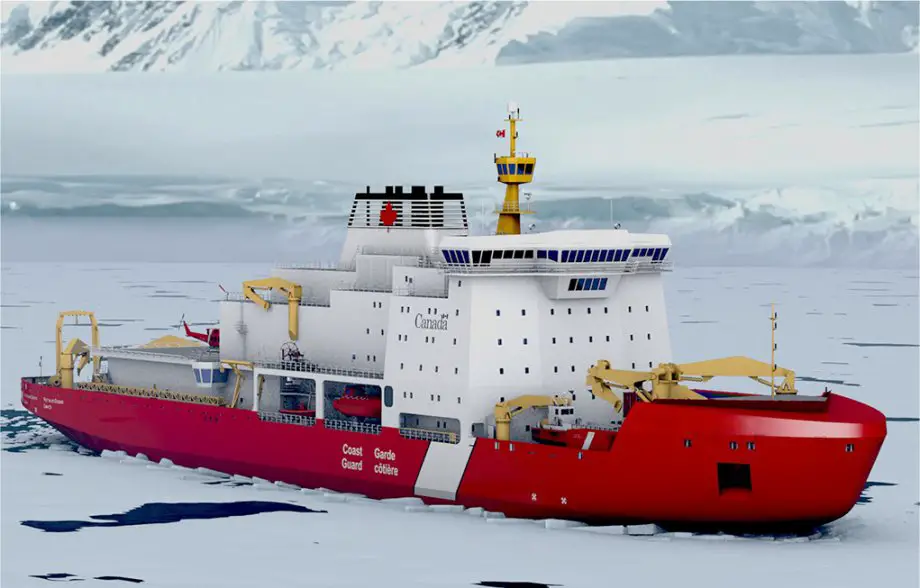Breaking news
Canada Coast Guard awards contract to Davie Shipyard for new icebreakers.
According to information published by the Canadian government on March 26, 2024, an initial contract has been awarded to Chantier Davie Canada Inc., located in Lévis, Quebec. Valued at $19.6 million, inclusive of taxes, this initial contract tasks Chantier Davie with developing the preliminary design for the icebreakers.
Follow Navy Recognition on Google News at this link
 Artist rendering of an icebreaker. (Picture source: Canadian Coast Guard)
Artist rendering of an icebreaker. (Picture source: Canadian Coast Guard)
These vessels are earmarked to replace the Canadian Coast Guard's (CCG) existing medium icebreaker fleet, which operates in the waters of Atlantic Canada and the St. Lawrence during winter, and ventures into the Arctic in summer months.
The introduction of the new icebreakers is anticipated to significantly enhance icebreaking services, assisting ships through ice-laden waters, and ensuring the clearance of ice from harbours and wharfs. This operation is vital not only to Canada’s commercial fisheries but also for the safe transport of essential supplies, goods, and people across Canadian Arctic waters.
Canadian Coast Guard
The Canadian Coast Guard operates two primary classes of medium icebreakers: the Project Resolute class and the Pierre Radisson class.
Project Resolute Class:
This class comprises three vessels acquired to supplement the Coast Guard's fleet: CCGS Captain Molly Kool, CCGS Jean Goodwill, and CCGS Vincent Massey. These icebreakers are crucial for ensuring navigational safety, preventing ice jams and flooding, and maintaining shipping routes across Canadian waters.
They operate across various regions, from the Atlantic and the St. Lawrence River to the Great Lakes and Arctic waters, supporting other Coast Guard programs like search and rescue, navigation aids, and environmental response.
Technically, these vessels measure 93.7 meters in length and 18 meters in width, powered by engines producing 18,278 horsepower, and equipped with twin propellers and rudders for high maneuverability. They can cruise at 12 knots, with a maximum speed of 16 knots, and maintain 3 knots through ice up to 1 meter thick.
Pierre Radisson Class:
The Pierre Radisson class includes vessels specifically designed for Arctic operations, like the CCGS Pierre Radisson and the CCGS Henry Larsen. These icebreakers are equipped with diesel-electric propulsion, capable of carrying helicopters for various missions.
The class showcases advanced capabilities for icebreaking in harsh Arctic conditions, featuring technology such as a differently-shaped bow with a raised forecastle and an "ice knife" to reduce hull friction and break ice more efficiently.
The propulsion system includes two GE AC electric motors and three Wärtsilä Vasa 16V32 diesel engines, enabling a maximum speed of 16 knots. They have a range of 20,000 nautical miles at 13.5 knots and can stay at sea for up to 90 days.
These vessels are also equipped with a Sperry Marine Bridgemaster navigational radar and facilities to support helicopters like the Bell 429 GlobalRanger and Bell 412EPI. The icebreakers carry 22.0 cubic meters of aviation fuel for helicopters, have a capacity for 40 persons, and a crew complement of 31, including officers and crew, and are equipped with a hospital ward.


























